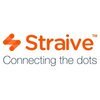Filter interviews by
Acuity Knowledge Partners Analyst Interview Questions and Answers
21 Interview questions
Mutual funds are investment vehicles that pool money from multiple investors to invest in a diversified portfolio of securities.
Mutual funds are managed by professional fund managers.
Investors buy shares in the mutual fund, which represents their ownership in the fund's assets.
Mutual funds offer diversification, as they invest in a variety of stocks, bonds, or other securities.
They provide an opportunity for small...
Asset classes are categories of investments that have similar characteristics and behave similarly in the market.
Common asset classes include stocks, bonds, cash, and real estate.
Each asset class has its own risk and return characteristics.
Investors often diversify their portfolios by investing in multiple asset classes.
Alternative asset classes such as commodities, private equity, and hedge funds are also availab...
EV stands for Enterprise Value, which is the total value of a company's equity and debt.
EV = Market Capitalization + Total Debt - Cash and Cash Equivalents
It is used to determine the total value of a company, including its debt
EV/EBITDA is a common valuation metric that compares a company's EV to its EBITDA
EV/Sales is another common valuation metric that compares a company's EV to its annual sales
EV can be used to...
Bloomberg is a financial data and news provider that offers a database of financial information.
Bloomberg database provides real-time and historical financial data
It includes information on stocks, bonds, currencies, and commodities
The database also offers news articles and analysis on financial markets
Bloomberg Terminal is a popular tool used by financial professionals to access the database
Leverage and solvency ratios assess a company's financial stability and ability to meet long-term obligations.
Leverage Ratio: Measures the proportion of debt used to finance assets. Example: Debt-to-Equity Ratio = Total Debt / Total Equity.
Solvency Ratio: Indicates a company's ability to meet long-term obligations. Example: Solvency Ratio = Total Assets / Total Liabilities.
High leverage can indicate higher risk, w...
Valuation techniques include DCF, comparables, and precedent transactions, with DCF focusing on future cash flows.
1. Discounted Cash Flow (DCF): Projects future cash flows and discounts them to present value.
2. Comparable Company Analysis: Values a company based on the valuation multiples of similar companies.
3. Precedent Transactions: Looks at the prices paid for similar companies in past transactions.
4. Asset-Ba...
Cash flow, income statement, and balance sheet are key financial statements used to assess a company's financial health.
Cash flow statement shows the inflow and outflow of cash over a period of time.
Income statement shows the company's revenues, expenses, and profits over a specific period.
Balance sheet provides a snapshot of a company's financial position at a specific point in time, showing assets, liabilities, ...
Depreciation affects financial statements by reducing taxable income, impacting cash flow, and reflecting asset value on the balance sheet.
Income Statement: Depreciation is an expense that reduces net income. For example, if a company has $100,000 in revenue and $20,000 in depreciation, its taxable income is $80,000.
Balance Sheet: Depreciation reduces the book value of assets. For instance, if a machine was purcha...
Cash flows statement focuses on cash inflows and outflows, while fund flow statement focuses on changes in financial position.
Cash flows statement shows the movement of cash in and out of a business during a specific period.
Fund flow statement focuses on changes in financial position by analyzing the sources and uses of funds.
Cash flows statement helps in assessing the liquidity and solvency of a business.
Fund flo...
The income statement shows a company's revenues and expenses over a specific period of time.
The income statement is also known as the profit and loss statement.
It includes revenues, cost of goods sold, gross profit, operating expenses, and net income.
Revenues are the money a company earns from selling its products or services.
Cost of goods sold is the cost of producing or purchasing the products or services sold.
G...
Acuity Knowledge Partners Analyst Interview Experiences
28 interviews found
I appeared for an interview in Jun 2025, where I was asked the following questions.
- Q1. What is the difference between 'let', 'const', and 'var' in JavaScript?
- Ans.
In JavaScript, 'let', 'const', and 'var' are used for variable declaration with different scopes and mutability rules.
'var' is function-scoped or globally scoped, allowing redeclaration.
'let' is block-scoped, preventing redeclaration within the same block.
'const' is also block-scoped but creates a read-only reference to a value.
Example of 'var': var x = 10; var x = 20; // valid
Example of 'let': let y = 10; let y = 20; ...
- Q2. What are local variables and global variables?
- Ans.
Local variables are confined to a function, while global variables are accessible throughout the program.
Local variables are declared within a function and can only be used inside that function.
Example: In a function 'calculate()', a variable 'result' defined inside is local.
Global variables are declared outside any function and can be accessed from anywhere in the code.
Example: A variable 'total' defined outside any f...
- Q1. What is junk bond?
- Q2. What is an emerging market?
- Ans.
Emerging markets are economies in transition, characterized by rapid growth and industrialization, often with increasing investment opportunities.
Emerging markets typically have lower income levels compared to developed countries.
They often experience higher economic growth rates; for example, India and Brazil.
These markets may have less mature financial systems and regulatory frameworks.
Emerging markets can attract fo...
- Q3. Which is the largest stock exchange in the world?
- Ans.
The largest stock exchange in the world is the New York Stock Exchange (NYSE), known for its vast market capitalization and trading volume.
The NYSE is located on Wall Street in New York City.
It has a market capitalization of over $25 trillion.
The NYSE lists more than 2,800 companies, including major corporations like Apple and Microsoft.
Trading on the NYSE occurs through a hybrid model of floor trading and electronic t...
I appeared for an interview in Jan 2025, where I was asked the following questions.
- Q1. What is Leverage and solvency ratio.
- Ans.
Leverage and solvency ratios assess a company's financial stability and ability to meet long-term obligations.
Leverage Ratio: Measures the proportion of debt used to finance assets. Example: Debt-to-Equity Ratio = Total Debt / Total Equity.
Solvency Ratio: Indicates a company's ability to meet long-term obligations. Example: Solvency Ratio = Total Assets / Total Liabilities.
High leverage can indicate higher risk, while ...
- Q2. Impact of Depreciation in all statements. (Balance sheet, income statement, cash flow statement.)
- Ans.
Depreciation affects financial statements by reducing taxable income, impacting cash flow, and reflecting asset value on the balance sheet.
Income Statement: Depreciation is an expense that reduces net income. For example, if a company has $100,000 in revenue and $20,000 in depreciation, its taxable income is $80,000.
Balance Sheet: Depreciation reduces the book value of assets. For instance, if a machine was purchased f...
- Q3. What is credit analysis and credit worthiness
- Ans.
Credit analysis evaluates a borrower's ability to repay debt, while creditworthiness assesses their reliability based on financial history.
Credit analysis involves reviewing financial statements, credit scores, and payment history to assess risk.
Creditworthiness is determined by factors like income stability, debt-to-income ratio, and credit history.
For example, a borrower with a high credit score (e.g., 750+) is gener...
- Q4. How many types of valuation techniques is there and what is DCF approch
- Ans.
Valuation techniques include DCF, comparables, and precedent transactions, with DCF focusing on future cash flows.
1. Discounted Cash Flow (DCF): Projects future cash flows and discounts them to present value.
2. Comparable Company Analysis: Values a company based on the valuation multiples of similar companies.
3. Precedent Transactions: Looks at the prices paid for similar companies in past transactions.
4. Asset-Based V...
I applied via LinkedIn and was interviewed in Jun 2024. There were 2 interview rounds.
(1 Question)
- Q1. Capital markets, mutual funds, statistics basics like mean median mode standard deviation, bonds
(1 Question)
- Q1. Bonds, capital markets, situation based questions
I applied via Referral and was interviewed in Mar 2024. There were 2 interview rounds.
Questions were related to Valuation and Industry research. General basic understanding of finance. Some questions related to Excel.
(4 Questions)
- Q1. Rechecking all the concepts discussed in Round 1, and asked family background, Past experiences, about Internships etc.
- Q2. What is IRR and how is it different from Xirr?
- Ans.
IRR stands for Internal Rate of Return, while XIRR is a function in Excel used to calculate the internal rate of return for a series of cash flows.
IRR is a financial metric used to evaluate the profitability of an investment by calculating the rate of return that makes the net present value of all cash flows equal to zero.
XIRR is a function in Excel that calculates the internal rate of return for a series of cash flows...
- Q3. Explain the Gordon Growth Method
- Ans.
The Gordon Growth Method is a way to value a stock based on the present value of future dividends, assuming a constant growth rate.
Calculates the intrinsic value of a stock by discounting future dividends at a constant growth rate
Formula: V = D / (r - g), where V is the intrinsic value, D is the expected dividend, r is the required rate of return, and g is the growth rate
Assumes dividends will grow at a constant rate i...
- Q4. While picking up shares which ratio should be seen?
- Ans.
The price-to-earnings (P/E) ratio is commonly used to evaluate shares when picking up shares.
Price-to-earnings (P/E) ratio is a key metric to assess the valuation of a company's shares.
A low P/E ratio may indicate that a stock is undervalued, while a high P/E ratio may suggest overvaluation.
Comparing the P/E ratio of a company to its industry peers can provide valuable insights.
Investors should also consider other rati...
I applied via Campus Placement
(2 Questions)
- Q1. Basics of accounts
- Q2. Depreciation ,golden rule of accounting ,basics of finance
(2 Questions)
- Q1. Some more accounting questions, and about diff between operating and finance lease
- Q2. Explained cash flow, income statement balance sheet
- Ans.
Cash flow, income statement, and balance sheet are key financial statements used to assess a company's financial health.
Cash flow statement shows the inflow and outflow of cash over a period of time.
Income statement shows the company's revenues, expenses, and profits over a specific period.
Balance sheet provides a snapshot of a company's financial position at a specific point in time, showing assets, liabilities, and e...
(1 Question)
- Q1. Ratios analysis, financial statements,Gk, behavioural questions
Interview Preparation Tips
I applied via Campus Placement
(4 Questions)
- Q1. Cash flow statement
- Q2. Cash flows statement vs Fund Flow statement
- Ans.
Cash flows statement focuses on cash inflows and outflows, while fund flow statement focuses on changes in financial position.
Cash flows statement shows the movement of cash in and out of a business during a specific period.
Fund flow statement focuses on changes in financial position by analyzing the sources and uses of funds.
Cash flows statement helps in assessing the liquidity and solvency of a business.
Fund flow sta...
- Q3. Free flow to equity
- Q4. Accounting Ratio
I applied via Campus Placement and was interviewed in Nov 2023. There were 3 interview rounds.

Basic questions of finance
(1 Question)
- Q1. 1. EBITDA 2. Deferred expenses, deferred revenue, accrued income 3. Difference in Interest coverage ratio Debt service ratio 4. Difference between trade payable and debt 5. Net worth 6. Goodwill of the com...
I applied via Campus Placement and was interviewed in Nov 2023. There were 3 interview rounds.

Basic questions of finance
(1 Question)
- Q1. 1. EBITDA 2. Deferred expenses, deferred revenue, accrued income 3. Difference in Interest coverage ratio Debt service ratio 4. Difference between trade payable and debt 5. Net worth 6. Goodwill of the com...
I applied via Campus Placement and was interviewed in Nov 2023. There were 3 interview rounds.

Basic questions of finance
(1 Question)
- Q1. 1. EBITDA 2. Deferred expenses, deferred revenue, accrued income 3. Difference in Interest coverage ratio Debt service ratio 4. Difference between trade payable and debt 5. Net worth 6. Goodwill of the com...
Top trending discussions






Acuity Knowledge Partners Interview FAQs
The duration of Acuity Knowledge Partners Analyst interview process can vary, but typically it takes about less than 2 weeks to complete.
Tell us how to improve this page.
Acuity Knowledge Partners Interviews By Designations
- Acuity Knowledge Partners Analyst Interview Questions
- Acuity Knowledge Partners Associate Interview Questions
- Acuity Knowledge Partners Senior Associate Interview Questions
- Acuity Knowledge Partners Delivery Lead Interview Questions
- Acuity Knowledge Partners Delivery Manager Interview Questions
- Acuity Knowledge Partners Financial Analyst Interview Questions
- Acuity Knowledge Partners Equity Research Analyst Interview Questions
- Acuity Knowledge Partners Business Analyst Interview Questions
- Show more
Interview Questions for Popular Designations
Overall Interview Experience Rating
based on 25 interview experiences
Difficulty level
Duration
Interview Questions from Similar Companies
Acuity Knowledge Partners Analyst Reviews and Ratings
based on 108 reviews
Rating in categories
|
Senior Associate
1.9k
salaries
| ₹9 L/yr - ₹16.5 L/yr |
|
Associate
1.9k
salaries
| ₹5.3 L/yr - ₹12 L/yr |
|
Delivery Lead
1.5k
salaries
| ₹12.9 L/yr - ₹22 L/yr |
|
Delivery Manager
978
salaries
| ₹16.5 L/yr - ₹27.6 L/yr |
|
Analyst
687
salaries
| ₹3.5 L/yr - ₹8.1 L/yr |

Access Healthcare

S&P Global

IKS Health

Straive
- Home >
- Interviews >
- Acuity Knowledge Partners Interview Questions

















